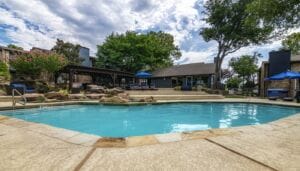Phoenix-area home prices continue to rise, but a short supply of available homes is causing the amount of activity in the market to fall. A new report from the W. P. Carey School of Business at Arizona State University gives an update on the hard-hit housing market of Maricopa and Pinal counties, as of April:
- The median single-family home prices are up 25 percent from a year ago.
- The overall supply of homes for sale is down 54 percent from last April.
- The number of single-family homes sold this April was down 11.5 percent from last April, largely due to the lack of supply.
Anxious Phoenix-area homeowners will be relieved to see the median single-family home prices in the area went up 25 percent, from $112,000 to $140,000, between April 2011 and April 2012. Realtors will note the average price per square foot went up 16.5 percent in the same timeframe. However, the new W. P. Carey School report indicates we could be seeing even more activity, if more homes were available for sale.
“April is normally a very busy month for home sales, but this year’s sales are weaker than last year’s due to the unusual lack of supply,” says Mike Orr, director of the Center for Real Estate Theory and Practice at the W. P. Carey School of Business. “We’re looking at only about 8,800 single-family homes for sale in the Greater Phoenix area, and more than 25 percent are priced at more than $500,000. The inventory of single-family homes for sale under $250,000 with no existing contract is equal to only 21 days of supply.”
Orr says we have a very unbalanced market with many more buyers than sellers. Home prices have been going up since they reached a low point in September 2011. Condominiums and townhomes are included in the boost. Their median sales price rose about 23 percent from April 2011 to April 2012, going from $72,500 to $89,050.
“Demand remains strong in the market, as evidenced by multiple-bid situations for the majority of resale home listings,” says Orr. “Most homes priced well are attracting multiple offers within a couple of days. Up to 20 or 30 offers for a home are becoming common, and often, many offers exceed the asking price. As a result, in the single month from March to April, the overall median sales price increased by 3.8 percent.”
The areas that suffered the most price damage during the recession, such as El Mirage, Maricopa, Tolleson and Glendale, are now seeing the most positive price movement. A few areas that were least affected by foreclosures, such as Cave Creek, Fountain Hills and Wickenburg, are still showing negative price movement.
Overall, foreclosures are down 62 percent in the Phoenix area from last April. However, one note of concern comes from the number of foreclosure starts – homeowners receiving notice their lenders may foreclose in 90 days. That number went up 4.7 percent from last April. Orr says he has seen a slight uptick in the rate of foreclosure notices since the signing of a recent legal settlement between the states and five of the nation’s largest housing lenders.
New-home sales, normal resales and short sales are up year-over-year, and most lenders have recently encouraged troubled homeowners to use short sales as a preferred alternative to foreclosure. Meantime, sales of homes owned by banks, Fannie Mae, Freddie Mac and the government are going down. In fact, so-called “distressed supply” dropped 81 percent from April to April.
“In order for us to see a more stable housing recovery, the basic rules of economics require prices to change enough to bring a new wave of sellers onto the market,” explains Orr. “That hasn’t happened yet, and so far, supply remains insufficient to meet demand.”
Orr’s full report on Phoenix-area home prices, including statistics, charts and a breakdown by different areas of the Valley, can be downloaded. More analysis is also available from knowWPCarey, the business school’s online resource and newsletter.




